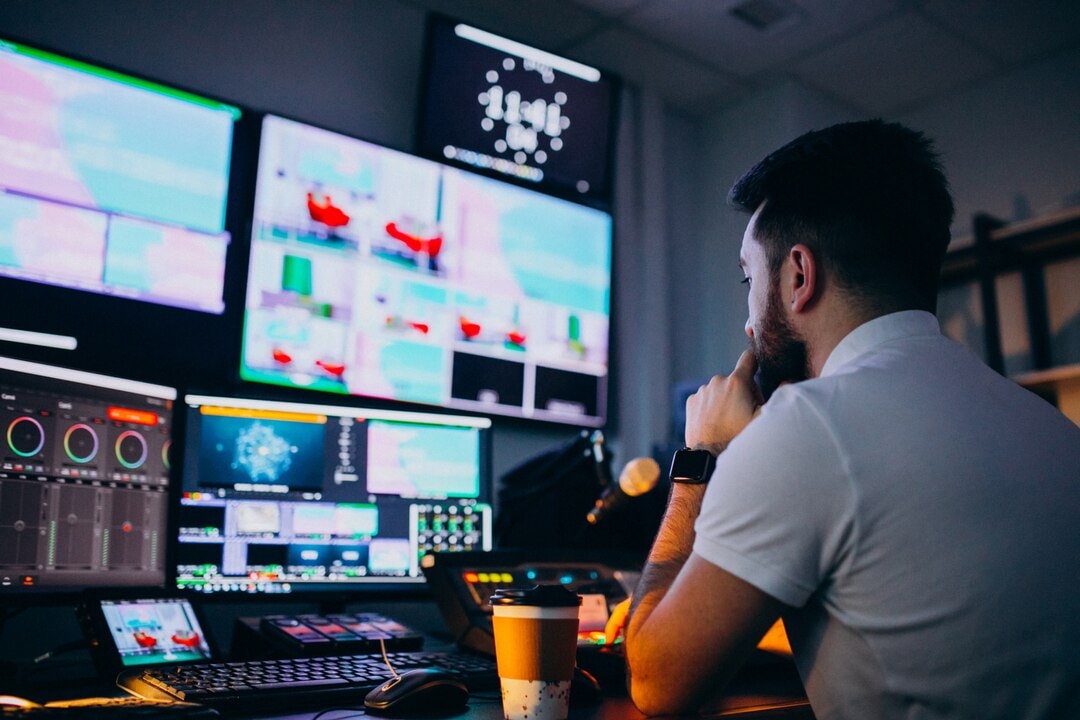Artificial Intelligence-Based OTT Audience Measurement Introduction
In essence, over-the-top platforms have completely changed the paradigm around which they expect their audience to consume content.
In the case of traditional television, however, audience viewing was a factor measured through rating systems such as Nielsen, and that is different for OTT platforms-cutting edge analysis is needed to assess their audiences' very behavior.
AI-based OTT audience measurement has revolutionized the way in which real-time data insights help content providers, advertisers, and streaming companies devise strategies of engagement in a more advanced manner than ever before.
AI-enabled analytics provide detailed insights into viewer behavior, which then allow the monetization of content and advertisement targeting to happen.
Utilizing these insights, trained streaming platforms will expand engagement opportunities, lower churn rates, and maximize revenue through personalization in ad placements and content suggestions.
Audience measurement of an AI element is hence made to be of utmost competitive advantage in a world where competition will become stiffer and stiffer in the pool of streaming service providers.

Traditional TV Ratings versus AI-Powered OTT Analytics
Introduction OTT audience metrics closely differ from television ratings. TV ratings are panel based-a representative sample is used for the whole audience. Panel methodologies do not have real time accuracy, device level insights and cross-device measurement.
Contrary to AI, OTT analytics provides:
• Real-time data processing: AI solutions work to monitor real-time viewer behavior, advertisement interaction, and user engagement.
• Measurement across devices: AI collates data from mobile phones, smart TVs, laptops, and gaming consoles.
• Granular insights: The AI is capable of investigating individual preference, content interest, and advertisement response in great detail.
These inputs help OTT services or platforms or platforms make the right decisions for themselves through a synergy of machine learning and big data analytics,which is the development of usable insights from raw data.
Challenges in OTT Audience Measurement
Despite its advantages,OTT audience measurement faces several obstacles:
1. Fragmented platforms:
Viewers watch contents on different platforms such as Netflix, Amazon Prime, Disney+, and YouTube, thus complicating the data collection procedure.
2. Concern for privacy:
User data collection is restricted by regulations such as GDPR and CCPA, which hinder the ability to track.
3. Dynamic behavior of viewers:
In contrast to traditional broadcast TV itself, where viewing behaviors had relatively predictable patterns, OTT audience behavior has a constant shift of devices and content, thereby complicating the measurement process.
To face the challenge there must be solutions arising out from AI ensuring accuracy and privacy of the data.

The New Era of Streaming Analytics
Limitations of Legacy Tracking Tools
Traditional tracking measures such as cookies or IP address-based tracking fall short when being applied in OTT settings.
This type of methods cannot accurately measure cross-device consumption, therefore often presenting an incomplete picture of the audience.
How AI improves the OTT measurement
AI handles huge volumes of unstructured data concerning:
• Video streams: Breaking content consumption down to the frame level.
• User interactions: Metrics for engagement, including pauses, rewinds, and skips.
• Metadata examination: Discovering the characteristics of content, what genres are preferred, and conducting sentiment analysis.
Competitive Advantages Enjoyed by AI
1. Personalization: AI aids personalized recommendations to the effect of increasing user experience, thereby improving retention.
2. Churn Reduction: AI models pick up on subscribers who might be leaving; hence, these models notify for retention efforts.
3. Ad Revenue Optimization: AI enhances targeting of advertisements resulting in better conversion rates.
Operational Procedure Of AI-Based OTT Measurement System
The AI-based OTT measure system uses a systematic process:
1. Data Ingestion:
AI brings data together from sources including smart TVs, streaming applications via internet connected devices, and other connected devices.

2. Machine Learning Processing:
- Session clustering: User behavior is clustered by AI into distinct patterns.
- Content tagging: AI using natural language processing (NLP) tags video content.
- Anomaly detection: AI recognizes abnormal user behaviors, such as bot views.
3. Analytics and Reporting:
- Analysis of watch time
- Points of drop-off
- Ad skipping rates
The outcomes inform streaming platforms about better content strategy and ad performance.
AI Technologies Enabling OTT Measurement
1. Computer Vision:
AI examines video frames and classifies shows, ads, and user-generated content (UGC).
2. NLP:
AI extracts insights from subtitles, reviews, and social media.
3. Reinforcement Learning:
AI builds adaptive learning models to predict viewer retention and content preference.
This allows a more granular dive into audience engagement.
Privacy-Oriented OTT Data Processing
By integrating the AI engine for OTT measurement the user data privacy is prioritize:
This AI is trained using data up to October 2023.
- Federated learning:
The user's device has local processing of the data so that raw data never leaves the system.
- In compliance with privacy regulations:
AI anonymous user data and processes it so that it adheres to GDPR and CCPA regulations.
AI with privacy focus builds trust while providing good insights.
Some Benefits of AI in OTT Audience Measurement
1. Hyper-Personalized Insights: AI segments the audience based on demographics, habits, and psychographics.
2. Real-Time Engagement Analytics: AI provides the tracking of the number of simultaneous viewers, user activity, and ad interaction.
3. Better Valuation of Content: AI links subscription video viewership with subscription renewal and advertising conversion.
4. Global Audience Scalability: Regardless of the size of the audience, AI models are adaptable based on regional behavior.

Applications Across the OTT Universe
1. Content Creators & Studios:
• Audience Retention Analysis: AI is able to forecast what content keeps viewers engaged the longest.
• Predictive Success Modeling: AI predicts at what level of success a piece of content might perform before it is released.
2. Advertisers & Media Buyers:
• Dynamic Ad Insertion: AI in real-time ad insertion maintains user interest.
• Cross-Platform Attribution: AI examines the cross-platform effectiveness of advertising.
3. Streaming Platforms (SVOD/AVOD):
• Churn Prediction: AI identifies users who are most likely to leave the service.
• Content Recommendations: AI would take user preferences into account and propose content that would enhance engagement levels.
• User Engagement Insights: Through the viewer insights, AI helps in optimizing content strategy.
4. Use Cases in Regulations:
• Ad frequency capping automation: AI protects users from ad overload.
• Enforcement of age-restricted content: AI ensures users' compliance with age check laws.
Technical Issues and Their AI Solutions
1. Fragmentation of Data Across Platforms: AI applies common ID frameworks to the unifying profiles of the users.
2. Latency Management in Real-Time Processing: AI utilizes edge computing for quickened analytics.
3. Bias in the Audience Segmentation: AI uses fair-aware machine learning for the delivery of unprejudiced insights.
4. Exorbitant Infrastructure Costs: AI optimizes cloud resources using serverless architectures to minimize costs.
The Forthcoming AI in Kingdom OTT Measurement
1. AI plus blockchain in the audience metrics: Provides audience metrics that are tamper-proof and reporting of data transparent.
2. Synthetic viewers with generative AI: Artificial Intelligence replicates viewer behavior to stress test the contents.
3. Immersive OTT Measurement: AI goes into metaverse, AR/VR measurement.
4. Voice-activated analytics: AI detects sentiment in users using smart assistants.
These are going to radically alter the way major OTT platforms measure and interact with their audience.

Conclusion
Transforming the OTT audience measurement, AI is changing the whole game of the streaming industry.
The AI enables all content creators, advertisers, and even streaming services to adjust their strategies easily through highly granular, real-time, and different devices data.
Implementation Steps
1. Pilot AI tools: Pilot AI-driven analytics on a limited-set content.
2. Collaborate with CDP providers: Work with customer data platforms for easy integration.
3. Train teams in data governance: Educate teams on ethical and compliant use of AI.
The farthest reach of AI is here to stretch as far as it is possible in OTT measurement-from increasing subscribers to ad revenue and the reinvention of content. There is no longer a choice, but AI-powered analytics is the way forward against the competition in the OTT space.
Frequently Asked Questions (FAQs)
1. How does AI enhance OTT measurement over traditional TV ratings?
AI-powered OTT measurement is transforming audience analysis by delivering real-time observations of viewer activity on multiple devices, such as smart TVs, mobile phones, gaming consoles, and computers.
Traditional TV advertising is based on wide demographic extrapolations from households, but AI-driven OTT analytics allows for:
- Granular segmentation of audiences based on viewing behavior and not broad estimates.
- Cross-device measurement, providing precise measurement across streaming, mobile phones, CTV, and desktop.
- Real-time analysis of data to enable content owners and advertisers to dynamically change OTT advertising activities.
With the use of AI and OTT attribution, advertisers are able to better optimize CTV advertising, enhance OTT monetization approaches, and better maximize ad spend compared to using legacy media advertising commonly employed by cable TV or satellite.
2. What is the contribution of AI towards optimizing OTT advertisement efforts?
AI is revolutionizing OTT advertising by making sure that OTT ads reach the audience at the right moment. This is achieved by:
- AI-powered audience segmentation: AI views viewer behavior to segment users in terms of behavior, demographics, and tastes.
- Ad podding capability: AI maximizes ad formats by inserting more than one video ads tactically during watch video content and consumption.
- OTT attribution data: AI assists advertisers in gauging the performance of OTT advertising campaigns by correlating ad impressions with user activity.
- Dynamic ad insertion: AI facilitates CTV OTT advertising by inserting targeted ads according to real-time viewing habits.
AI makes sure that advertisers don't target audiences indiscriminately but instead optimize campaigns for greater engagement and conversion.
3. How does AI guarantee privacy in OTT audience measurement?
Data privacy is one of the largest concerns in top OTT advertising space. AI-based OTT measurement solves this issue using:
- Federated learning: This AI approach ensures data is processed on users' internet-connected devices without sharing personal details with third-party servers.
- Compliance with regulations: AI measurement platforms adhere to worldwide privacy regulations such as GDPR and CCPA, safeguarding the anonymity of audience profiles.
- Processing anonymized data: Aggregated data processed by AI improves OTT advertising campaigns while not invading personal user privacy.
Through the deployment of AI models focused on privacy, OTT providers can uphold user trust without forgoing the ability to deliver potent OTT advertisement experiences.
4. What are the prominent OTT platforms gaining from AI-measurement?
Prominent OTT platforms and streaming services leverage AI to maximize OTT measurement, personalize recommendations, and optimize OTT ad campaigns. These include:
- Amazon Prime Video: Applies AI for content recommendations and streaming video advertising optimization.
- HBO Max, Disney+, and Hulu: Utilize AI for OTT monetization strategies, enhancing ad targeting and user interaction.
- Netflix: Uses AI-powered algorithms for predictive content analysis and OTT attribution.
- YouTube and Twitch: Use AI for dynamic OTT advertisements and real-time audience monitoring.
AI-based OTT measurement is a requirement for all OTT providers and aids in maximizing user experience, enhancing ad inventory management, and improving CTV advertising efficacy.
5. How can advertisers dive into OTT advertising based on AI?
Advertisers wishing to dive into OTT advertising can tap into AI-based measurement solutions for amplifying OTT advertising capabilities. The primary steps involve:
1. Harness new measurement tools: AI-driven OTT attribution enables advertisers to gauge engagement on numerous streaming devices.
2. Leverage cross-device integration: AI measures viewer interactions across smart TVs, mobile phones, and gaming consoles to optimize CTV technology OTT services and advertising.
3. Maximize ad spend: AI ensures that OTT ad campaigns drive the most ad inventory by reaching high-value users with contextual video ads.
4. Try various ad formats: AI supports dynamic ad podding so that brands can test streaming video advertising placements.
Through AI and OTT measurement integration, advertisers can enhance ROI, optimize digital advertising initiatives, and stand out in the OTT environment.
Artificial intelligence-based OTT measurement is transforming the manner in which content providers, advertisers, and OTT platforms monitor audience engagement. Through the use of AI-driven analytics, brands are able to enhance OTT advertising campaigns, enhance user experience, and generate increased revenues in the streaming video content sector.